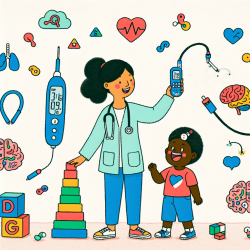Introduction
Adolescence is a critical developmental period characterized by rapid biological, cognitive, and emotional changes. It is during this time that foundational health habits are established, which can have lasting effects into adulthood. Recent research highlights the importance of physical activity in mitigating depressive symptoms among adolescents, a finding that can guide practitioners in creating effective interventions.
The Research Findings
The study titled "Physical activity and depressive symptoms among adolescents in a school-based sample" explores the relationship between physical activity and depression in adolescents. Conducted in Brazil, the study surveyed 7,405 adolescents aged 14 to 16 years across 101 public schools. The results were telling: adolescents who engaged in less physical activity reported higher levels of depressive symptoms.
Specifically, 84.4% of the adolescents did not meet the World Health Organization's (WHO) recommendation of at least 60 minutes of moderate to intense physical activity daily. Those who exercised less frequently had higher median depression scores, indicating a strong association between low physical activity levels and increased depressive symptoms.
Implications for Practitioners
These findings underscore the potential of physical activity as a preventive measure against depression in adolescents. As practitioners, integrating these insights into your practice can significantly enhance the mental well-being of the children you serve. Here are some strategies to consider:
- Promote Daily Physical Activity: Encourage schools to incorporate at least 60 minutes of physical activity into the daily routine of students. This can be achieved through structured physical education classes or unstructured playtime.
- Personalize Activity Plans: Tailor physical activity programs to meet the interests and abilities of individual students. This personalization can increase engagement and adherence to physical activity routines.
- Collaborate with Educators: Work closely with teachers and school administrators to create a supportive environment that values and promotes physical activity as part of the school culture.
- Monitor and Evaluate: Use tools like the Patient-Centered Assessment and Counseling for Exercise Plus Nutrition (PACE+) to regularly assess students' physical activity levels and adjust programs as needed.
Encouraging Further Research
While the study provides valuable insights, it also highlights the need for further research to explore the causal relationship between physical activity and depressive symptoms. Practitioners are encouraged to contribute to this field by conducting longitudinal studies or implementing pilot programs that can offer more definitive evidence on the benefits of physical activity for mental health.
Conclusion
Incorporating physical activity into the daily lives of adolescents is not just about improving physical health; it is a crucial step towards enhancing their mental well-being. By leveraging the findings of this study, practitioners can play a pivotal role in shaping healthier futures for children.
To read the original research paper, please follow this link: Physical activity and depressive symptoms among adolescents in a school-based sample.










